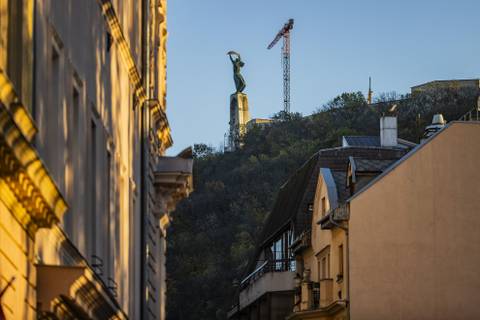Back in July, we reported that scaffolding had been erected around the base of the Liberty Statue (sitting atop Gellért Hill) to assess its condition and initiate repairs. This would be followed by the actual renovation and creation of the surrounding terrace. In a recent press release, the Castle Headquarters stated that work is already underway to repair stone defects and weather erosion on the pedestal, as well as replace and restore stone elements.

The work involves cleaning the surface of the main sculpture and its components and inspecting the thousands of fixing screws in the sculptures for repairs to any cracks. Metal restorers are currently replacing internal structural joints and cleaning external surfaces.
As they claim,
„A cross will be placed on the pedestal, the most important symbol of 1100 years of Hungarian statehood, Western Christianity, and European culture. On the pedestal designed by the Stalinist Boris Iofan, where the statue of the Soviet soldier once stood, we will place a cross,”
adding that following the restoration work, a new terrace around the sculpture will be created, which will be designed to match the Citadel's renewed public gardens and parks.

The Citadel has also undergone a site survey and archaeological excavation, and the reconstruction of the outer and inner walls of the fortress and the internal courtyard are being carried out in several phases. The development will increase the green area by a factor of one and a half, and a new public park will be created inside the fortress wall. One of the most visible features of the works is the opening of the walls on the north and south sides.
„Behind the Liberty Statue, a spectacular staircase will be created, allowing visitors to enter the fortress park directly. The renewed cannon tower will house a striking exhibition on the Hungarian struggle for freedom, entitled The Bastion of Freedom. In line with the design of the development, the exhibition is being prepared by Art1st Design Studio Kft. with the help of a wide team of experts, including a historian, museum educator, and scriptwriter.″




The multi-phase work is expected to be completed by 2026 when the exhibition is scheduled to open.
(Cover photo: Castle Headquarters)





